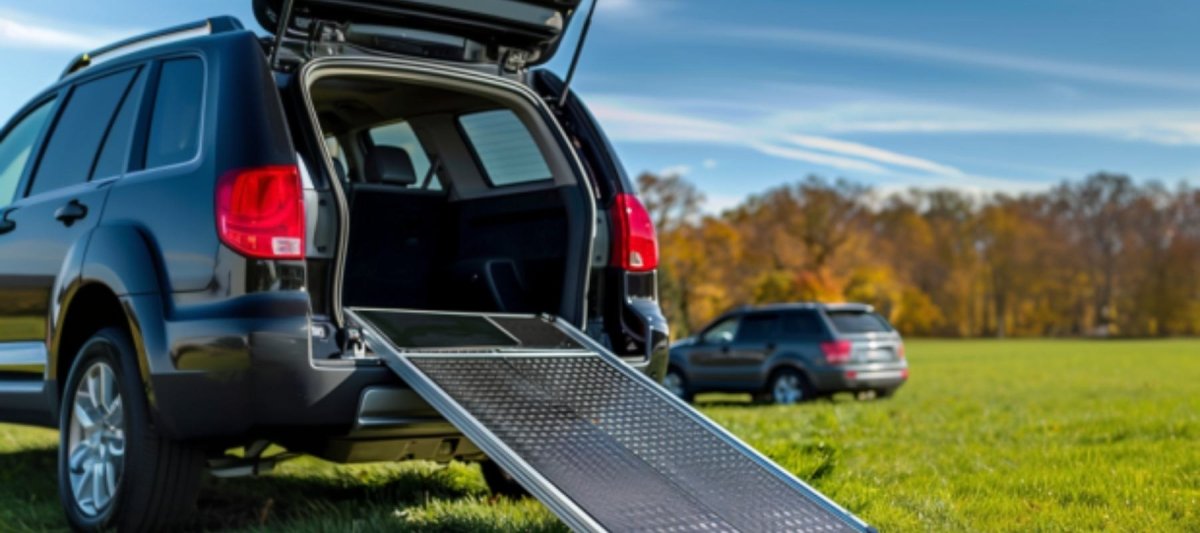Wheelchair ramps are lifelines of independence for many individuals, providing crucial access to homes, businesses, and vehicles. But like any frequently used structure, these ramps require regular attention to ensure they remain safe, functional, and compliant with accessibility standards. In this comprehensive guide, we'll explore the ins and outs of wheelchair ramp maintenance and repair, offering expert insights and practical tips to keep your ramps in top condition. Whether you're a homeowner, business manager, or caregiver, this article will equip you with the knowledge to maintain these vital accessibility features effectively.
The Crucial Role of Wheelchair Ramp Maintenance
Regular maintenance of wheelchair ramps isn't just about aesthetics; it's a critical safety measure that ensures continued accessibility and prevents accidents. Proper upkeep is essential for both permanent and portable ramps used in various settings, including homes, businesses, and vehicles.
Key Benefits of Regular Maintenance:
- Ensures continuous safety for users
- Extends the lifespan of the ramp
- Maintains compliance with accessibility standards
- Prevents costly repairs or replacements
- Preserves the aesthetic appeal of your property or vehicle
Common Wheelchair Ramp Issues: What to Watch For
Understanding the typical problems that can affect wheelchair ramps is the first step in effective maintenance. Here are the most common issues to look out for:
1. Surface Wear and Tear
Constant use can lead to worn spots, cracks, or splinters in the ramp surface.
2. Loose or Damaged Components
Handrails, hinges, or fasteners may become loose or damaged, posing safety risks.
3. Erosion of Non-Slip Surfaces
The crucial non-slip coating can wear away over time, especially in high-traffic areas.
4. Weather-Related Damage
Outdoor ramps are particularly susceptible to damage from sun, rain, and temperature fluctuations.
Maintenance Best Practices: Your Wheelchair Ramp Care Checklist
Implementing a regular maintenance routine is key to preventing major issues and ensuring your wheelchair ramp remains in optimal condition. Here's a comprehensive checklist to guide your maintenance efforts:
Essential Maintenance Tasks:
- Regular Inspections: Conduct thorough visual and physical inspections at least monthly.
- Surface Cleaning: Regularly clean the ramp surface to prevent buildup of dirt or debris.
- Non-Slip Surface Maintenance: Check and maintain non-slip surfaces, replacing when worn.
- Structural Checks: Inspect for any loose components and tighten or replace as necessary.
- Weather Protection: Apply appropriate sealants or protective coatings for outdoor ramps.
- Lubrication: For portable ramps, lubricate moving parts like hinges and joints.
Spotlight on Portable Ramps: Special Maintenance Considerations
Portable wheelchair ramps, such as those used for vehicles or temporary access, require some additional care:
- Storage: When not in use, store portable ramps in a dry, protected area to prevent weather damage.
- Transport Care: Use ramp bags or cases to protect ramps during transport and prevent damage.
- Hinge and Joint Inspection: Regularly check and maintain folding mechanisms and joints.
- Weight Capacity Verification: Periodically review the ramp's weight capacity to ensure it still meets your needs.

SUITCASE Singlefold Ramp
This portable ramp exemplifies durability and ease of maintenance. Its aluminum construction resists corrosion, while the non-skid surface ensures long-lasting traction. Regular cleaning and inspection of its folding mechanism will keep it in top condition for years.
DIY Repair Tips: When to Roll Up Your Sleeves
For minor repairs, a DIY approach can be cost-effective and rewarding. Here are some repairs you might be able to tackle yourself:
- Tightening Loose Hardware: Use appropriate tools to tighten any loose screws, bolts, or fasteners.
- Replacing Non-Slip Strips: Remove old, worn strips and apply new ones, ensuring proper adhesion.
- Filling Small Cracks or Holes: Use appropriate filler for your ramp material, following product instructions carefully.
- Touching Up Paint or Sealant: Address small areas of peeling paint or worn sealant to prevent further degradation.
Safety First: Always prioritize safety. If you're unsure about any repair, it's best to consult a professional.
When to Call in the Pros: Wheelchair Ramp Repair
While regular maintenance can prevent many issues, some problems require professional attention. Here's when to consider professional wheelchair ramp repair:
- Significant structural damage or instability
- Complex repairs requiring specialized tools or expertise
- Issues affecting the ramp's slope or alignment
- Extensive weather damage or material degradation
- Any problem you're not comfortable addressing yourself
Finding "Wheelchair Ramp Repair Near Me"
When searching for local repair services, consider these options:
- Contact local accessibility equipment suppliers
- Consult with occupational therapists or physical therapists for recommendations
- Reach out to local disability support organizations
- Check online directories and review platforms for highly-rated accessibility contractors
Innovative Approaches to Wheelchair Ramp Maintenance
As technology advances, new possibilities for wheelchair ramp maintenance and repair are emerging:
1. Advanced Materials
New, more durable and weather-resistant materials are being developed for ramp construction.
2. Modular Design
Some ramps now feature modular components, allowing for easier repair and replacement of worn parts.
3. Self-Cleaning Surfaces
Emerging technologies may soon offer self-cleaning or highly resistant surface coatings.
4. Smart Monitoring
Future ramps might incorporate sensors to alert owners to maintenance needs.
The Bigger Picture: Accessibility and Quality of Life
Maintaining and repairing wheelchair ramps goes beyond mere property upkeep; it's about ensuring continuous accessibility and improving quality of life for individuals with mobility challenges. Whether it's a permanent home ramp or a portable vehicle ramp, proper maintenance ensures that these vital accessibility features remain safe, functional, and welcoming.

TRANSITIONS Angled Entry Ramp
This versatile ramp showcases the importance of regular maintenance. Its aluminum construction offers durability, but regular checks of the adjustable legs and non-slip surface are crucial for optimal performance and safety.
Conclusion: Empowering Access Through Diligent Care
Wheelchair ramp maintenance and repair are essential responsibilities for anyone committed to ensuring accessibility. By implementing regular maintenance routines, addressing repairs promptly, and staying informed about innovative solutions, we can ensure that these vital accessibility features remain safe and functional.
Remember, a well-maintained ramp is more than just a structure; it's a bridge to independence, community participation, and improved quality of life for individuals with mobility challenges. Whether you're caring for a home ramp, business access, or vehicle ramp, your commitment to maintenance makes a real difference in people's lives.
At American Homecare Direct, we're dedicated to supporting you in all aspects of accessibility, including wheelchair ramp maintenance and repair. Whether you need advice on best practices, help finding local repair services, or information on the latest accessibility innovations, our team is here to assist you.
Ready to Ensure Your Wheelchair Ramps are in Top Condition?
Explore our range of wheelchair ramps and accessories to find high-quality, easy-to-maintain options. Contact us today for expert guidance on ramp care and maintenance!
Shop Wheelchair Ramps








